The County Ground: Swindon Town
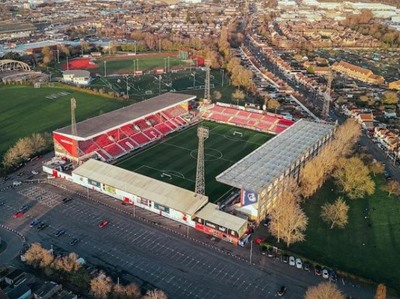
From Swindon Town FC
The County Ground has been Swindon Town Football Club’s home since 1896, the year it opened. It shares its’ name with the home of Swindon Cricket Club, though they are separate places. To add even more confusion to the mix, Swindon Town FC did actually play their home games at the cricket ground from 1893 until 1896. The ground’s history isn’t only based around cricket, however, with the stadium being used to house prisoners of war from 1940 until the end of the Second World War. Not many stadiums can say that.
In 1951 the club spent £350 installing floodlights, becoming the first football club to have dedicated lights for the accommodation of night matches. They were first used on the second of April 1951 when the club hosted Bristol City, a rival team. They weren’t used for a league match until 1956, when Millwall were the visitors.
Stats
| The County Ground Stats | |
|---|---|
| Year Opened | 1896 |
| Capacity | 15728 |
| Average Attendance | 8483 |
| Record Attendance | 32000 (Swindon Town v Arsenal (1972)) |
| Pitch Size | 100 x 64 (6400) |
| Former Name | Wiltshire County Ground |
| Owner | Swindon Town FC |
| Clubs Hosted | Swindon Town F.C. |
| Swindon Town Stats | |
|---|---|
| Year Founded | 1879 |
| Nickname | The Robins |
| Club Mascot | Rockin' Robin |
| Rivals | Bristol City, Bristol Rovers, Reading, Oxford |
| Previous Stadiums | The Croft |
| Kit | Red (Home) / Dark Blue with Grey Pinstripes (Away) |
| Training Ground | King Edwards Place |
| Shirt Sponsor | Mipermit |
| Team Owner | Clem Morfuni |
| Record Goalscorer | Harry Morris (229) |
| Record Appearances | John Trollope (889) |
The County Ground Photos
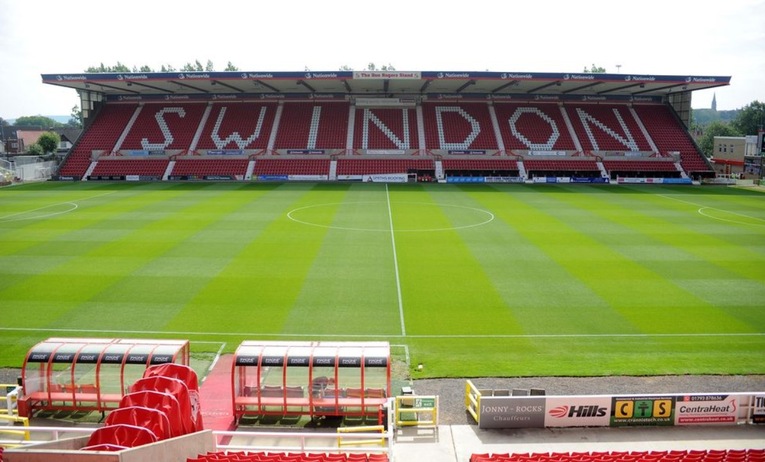
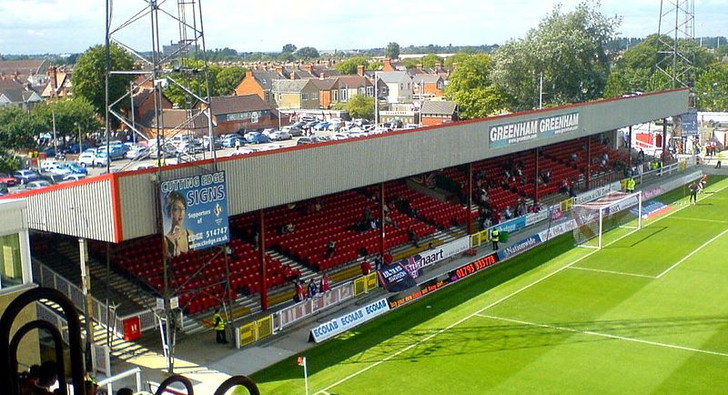
By No machine-readable author provided. Richard Corbin assumed (based on copyright claims). [Public domain]
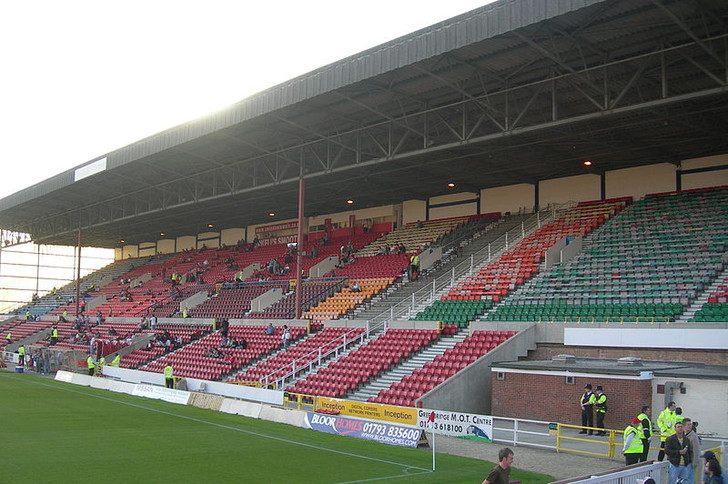
By Gloworm 44 at English Wikipedia [Public domain]
The County Ground Seating Plan and Where to Sit
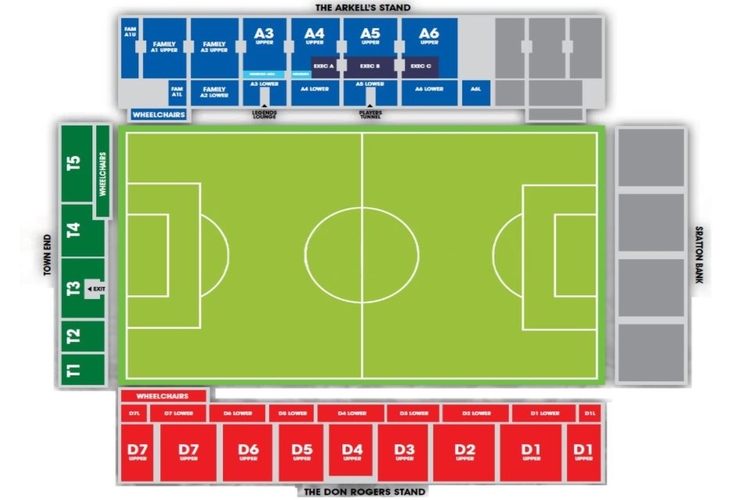
The Arkell’s Stand dates back to 1971 and is a single-tier structure that runs along the side of the pitch. It is considered to be the main stand at the ground as it houses the changing rooms and the tunnel. The Stratton Bank is technically a single-tier that is split into two. There is no roof, with the scoreboard standing proudly at the back of the stand. The Don Rodgers Stand is opposite The Arkell’s Stand and was named after the club’s former inside left player. Finally, The Alan McGloughlin Town End (named after the late player and academy director) is home to Swindon’s most vocal fans.
Swindon Town Ticket Prices
Swindon have streamlined their pricing system, and so the amount of money you’ll pay if you want to see The Robins live will only depend on where in the ground you’d like to sit and how old you are. There are also offers for family tickets and so on.
Here are the cheapest and priciest tickets for adults and concessions in each of the match categories, not including family deals:
- Adults: £21 – £24
- Concessions: £18 – £20
How To Get Swindon Town Tickets
Tickets can be bought online, over the phone or in person from the club’s ticket office. Just be warned that it will cost you an extra £2.00 per ticket for the privilege of buying over the phone.
Where to Buy
Getting To The County Ground
Swindon is something of a London commuter town, so it’s reasonably easy to get to. Here are some of the ways you might want to consider:
Train – Swindon Railway Station is about ten minutes walk from the stadium, so it won’t take you long to get there if you arrive in the town by train.
Bus – Buses 1, 1A, 13, 14, 16, 16X and 18 all call reasonably close to the stadium from the town centre.
Car – From the East & the West leave the M4 at Junction 15 and get onto the A4259 then Queens Drive before getting onto the County Road that will take you to the ground. From the Midlands use the M40 to Junction 9 then use the A43, the A34 and the A420 into Swindon. From there follow the signs to The County Ground.
By Air – Bristol Airport is about forty miles away, Heathrow is just under sixty miles and Southampton Airport comes in at roughly fifty miles, so your choices are numerous.
Taxi – From Swindon Railway Station to The County Ground will take you about five minutes and cost around £7.
Parking Near The County Ground
You can park at the stadium for £10 or at nearby St. Joseph’s School, Drove Primary School, or the Cricket Club for £5 at each location.
Useful Resources
- Parking - Just Park
The County Ground Hotels
With Bristol and London both being reasonably close to Swindon you might get pulled in by the bright lights of the big city. If not there are plenty of great places to stay in the town itself, with our favourites listed here:

The White Hart - £55+
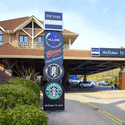
Village Hotel Swindon - £70+

The Sun Inn - £80+
Pubs and Bars Near The County Ground
Swindon isn’t one of the most popular destinations for those that love a drink, but there are still a couple of interesting watering holes knocking about the place. Here are some of our recommendations:
The Tap & Barrel
The County Ground Hotel
The Merlin
Facilities
This stadium is starting to show its age now, and although there are places to buy a bite to eat or a quick drink there aren’t many of them and they’re normally quite busy.
Prices
- Programme: £3
- Pie: £3.5
- Cup of tea: £2.1
- Beer: £3.5
Hospitality
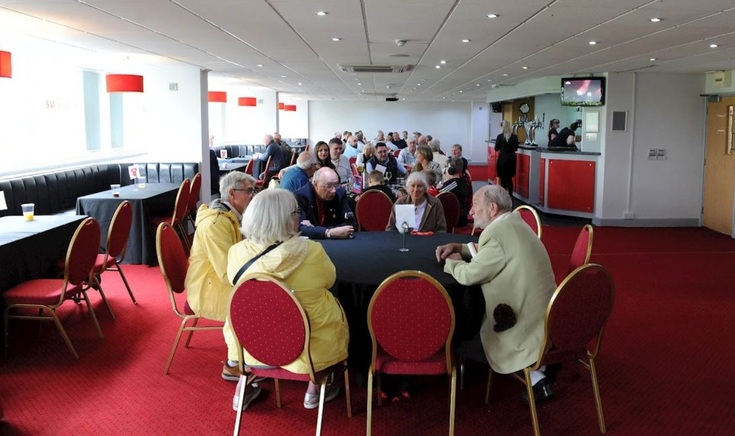
There are a couple of hospitality packages available for Swindon Town matches. The 1879 Suite is the first class option, promising a three-course meal, refreshments at half-time and after the final whistle, and occasional visits from club legends as well as a Man of the match visit. Alternatively, the Robins Suite will see you receive a two-course meal, refreshments during and after the match, a private pay bar and a match day host.
Private Hire
The array of suites and lounges at The County Ground mean that you’re able to host a number of functions at the home of The Robins. Exhibitions, business meetings, conferences, product launches, training courses and awards ceremonies have all been hosted at the stadium in the past. The various options available can play host to from as few as 10 people up to 180 depending on the kind of event you are holding.
Stadium Tours & Museum
The club doesn’t run regular tours, but they are available in the holidays if you contact the necessary member of staff in advance. You’ll see the changing rooms, the gym, the match officials’ room and the tunnel and dugouts. The tour costs £8 for adults and £4 for concessions. There is no museum as such, but a local charity called Swindon Town FC Museum has a website dedicated to preserving the history of the club, so you can check that out.
About Swindon Town
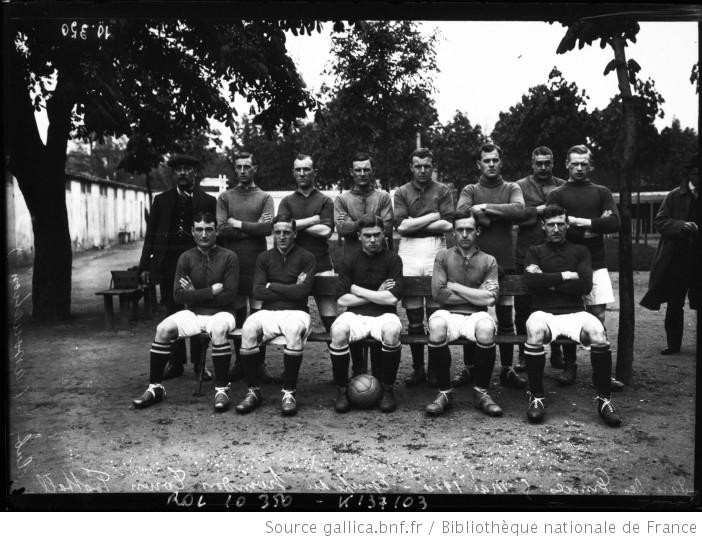
The Robins actually had three attempts at forming as a football club, starting life in 1879 as Swindon AFC before becoming The Spartans in 1880, and not being named Swindon Town until 1883. They became a professional outfit in 1894 but weren’t elected to the Football League until 1920. The team was formed by the Reverend William Pitt of Liddington, just in case you’re ever asked.
Despite only spending one season in the Football League’s top-flight – the 1992-1993 Premier League season, if you’re wondering – Swindon Town are ranked as the 47th most successful English club in domestic terms. This might have something to do with their reaching the semi-finals of the FA Cup in 1910 and 1912 or the fact that they beat Arsenal to win the League Cup in 1969. That victory should have seen them play in the equivalent of the UEFA Cup but it didn’t, owing to the fact that they were in the third-tier of English football and therefore ineligible.
The County Ground History
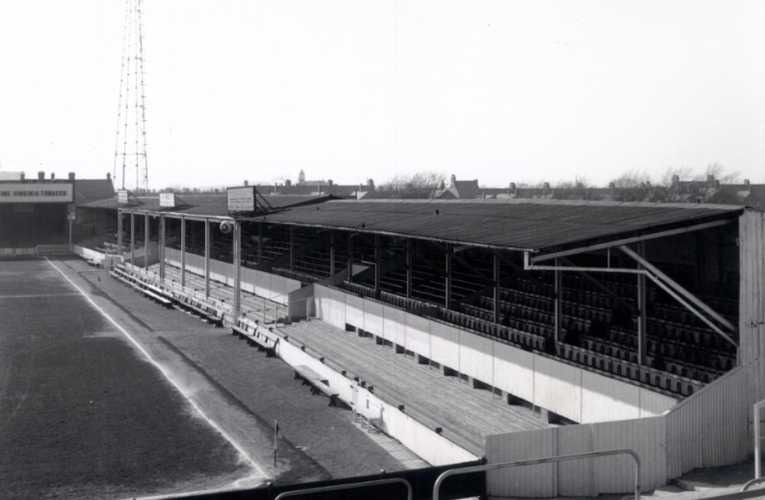
The County Ground’s first ever stand was built thanks to a £300 donation from nearby Arkell Brewery, with the club naming a standing after the owner, Thomas Arkell, ever since. The stadium was built on land owned by Swindon Borough Council and the club paid rent to them every year until they finally got the money together to buy it outright for £2.3 million in 2023. It was a joint venture between the club itself and the supporters.
Money has often been an issue for the football club, with any improvements to the stadium being done on an incremental basis rather than in one big development.
Following the Taylor Report into the Hillsborough Disaster, all stadiums had to become all-seater structures. The County Ground followed this ruling, adding the Don Rogers Stand in 1994 and converting the terraced stand at the Shrivenham Road end of the stadium to seating shortly after.
Future Developments
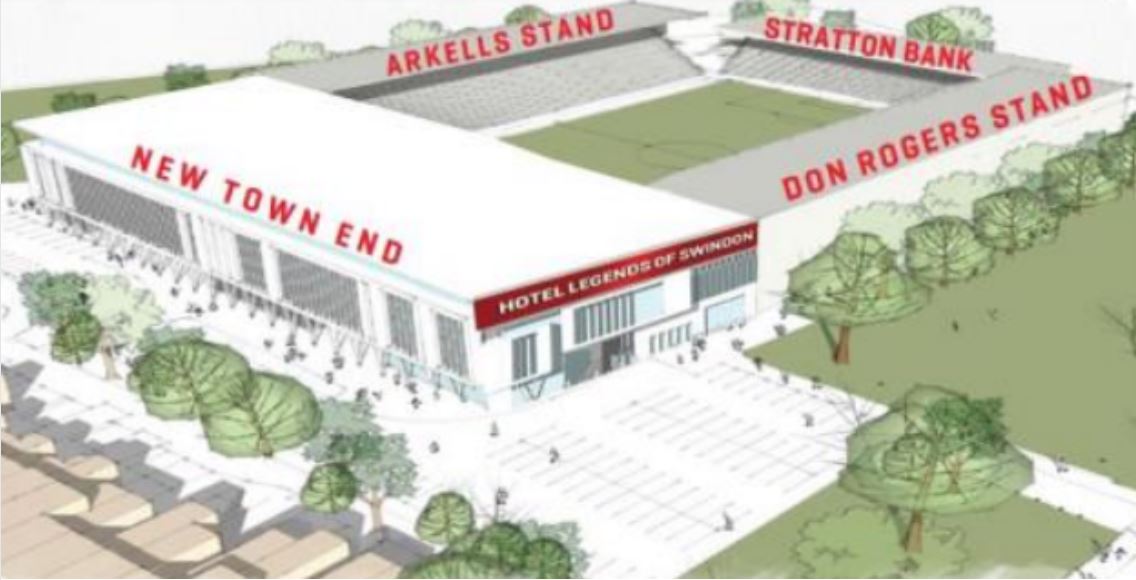
Plans to relocate to a new stadium were suggested as far back as the year 2000, but since the club have now bought The County Ground that’s off the cards.
The club have committed to a £1 million development plan over 3 years, and if they fail to achieve it, the council will have the option to buy the stadium back. They won’t get much done for a million quid though, so I wouldn’t expect any major redevelopments.
